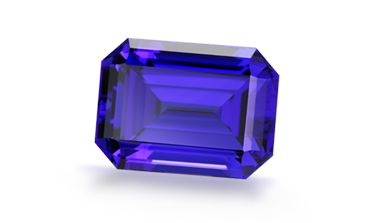
There are standardized methods for judging gemstones, just like there are with diamonds. But since gemstones come from a variety of mineral families, grading them can be a bit more complicated. In general, though, you can get a lot of information about a gem just from familiarizing yourself with a few basic concepts.
Unlike diamonds, where a lack of color is considered ideal, vivid color is highly prized for gemstones. Whether the stone in question is an emerald, a ruby, or an amethyst, the more vibrant and intense a gemstone’s color is, the more it is worth. Gems may also be treated via methods such as heating, oiling, or waxing to enhance their color.
The cut of a gemstone also has a big impact on its appearance and value. While diamonds are cut mostly to emphasize their sparkle, gemstones are cut mostly to emphasize their color. Transparent and translucent (see-through) gems are usually faceted to increase their sparkle. Opaque gems like turquoise are usually made into cabochons, which are flat on the bottom and domed on the top. Regardless of how a gemstone is cut, it will also be heavily polished to help bring out its color.
Just like diamonds, gemstones often develop flaws as they grow. And, as with diamonds, gemstones can have internal flaws (inclusions) or external flaws (blemishes). Most of these flaws are either invisible or barely visible to the naked eye. Gems are no longer considered jewelry quality if their flaws impact their structural integrity.

Tanzanite is a relatively recent discovery. This gem, which ranges from velvety blue to royal purple, was first discovered in Tanzania in 1967–that’s where it gets its name! This beautiful stone is only found in one very specific region of Tanzania. Some believe that tanzanite strengthens intuition and perception.
Use this space to save the products you like. To add a product here, simply click the icon.